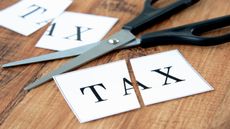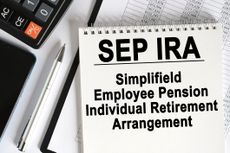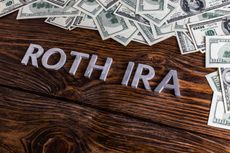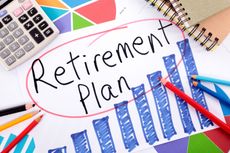The New Realities of Retirement
It's time to rethink your image of retirement. Whether you're years or decades away, you can make the new reality work for you.

It's the year 2020, and you're easing into another day in retirement. You kiss your wife goodbye on your way to the golf course. She sips her coffee before heading for the mall. But tee time and shopping are not on today's agenda. You're staffing the local pro shop, and she's working part-time as a cashier at Macy's in an effort to supplement your savings and make the money last another 25 years.
Meanwhile, your thirtysomething kids, who are climbing the corporate ladder, are saving 15% of their gross income (including matching employer contributions) for their eventual retirement. And they don't even have to think about it. When they were hired, they were automatically enrolled in their company's 401(k) plan, their retirement contributions are automatically increased by two percentage points each year, and their contributions are automatically directed to a target-date fund that contains a mix of investments geared to their age and anticipated retirement date.
Theirs will be the first generation to benefit fully from an automatic 401(k) system throughout their careers. If they stick with it, they should be able to easily replace about 80% or more of their preretirement income -- including Social Security benefits, which will be smaller than today's retirees receive. Given the nation's budget-deficit problem, reductions in future Social Security benefits are inevitable.

Sign up for Kiplinger’s Free E-Newsletters
Profit and prosper with the best of expert advice on investing, taxes, retirement, personal finance and more - straight to your e-mail.
Profit and prosper with the best of expert advice - straight to your e-mail.
Even workers who choose to work for one of the nation's millions of small businesses will find it easier to save for retirement in 2020 than it is today. Automatic payroll deductions to fund IRAs will become more prevalent, and government incentives will encourage more small businesses to offer their own retirement plans. That's a far cry from the nearly half of private-sector workers who had no access to employer-based retirement-savings plans in 2010.
Boomer blues
During its 30-year history, the grand experiment known as the 401(k) has evolved from a sideline plan designed to supplement retirement savings to the only retirement plan a lot of workers have. But it has been less than successful for many of the 78 million baby-boomers, who started turning 65 this year at the rate of 8,000 people per day. For them, age 65 probably won't be a magic milestone marking the beginning of retirement. It will just be another year they get closer to their goal. In this new world, 70 is the new 65.
Many boomers first encountered 401(k) plans midway through their careers and initially received little guidance about how much to save or how to invest the money. By the time employers and plan sponsors got serious about helping workers figure out how to estimate and fund their retirement goals, severe market losses at the beginning and end of the past decade snatched back most of their gains.
Average 401(k) account balances -- after increasing in 2003 and for the next four consecutive years -- fell 28% in 2008, according to a recent joint study by the Investment Company Institute and the Employee Benefit Research Institute. Although the average account balance bounced back 32% in 2009, rising to $109,723, it was still below 2007 levels. Overall, accounts rose by an average annual growth rate of 10.5% from 2003 to 2009. But most of the increase was due to continued contributions rather than investment gains.
Thirty years after the plan first appeared, some critics wonder whether the 401(k) -- which is a defined-contribution plan and leaves investment decisions to employees -- was such a good idea. They bemoan the loss of traditional, defined-benefit pension plans, in which employers shouldered the cost and risk of their employees' retirement. "The experience of the baby-boomer generation clearly demonstrates that individual investors do not have the skills, time or interest to properly manage their retirement investment portfolio," says Lee Saunders, secretary-treasurer of the American Federation of State, County and Municipal Employees. "We need to recognize that our current retirement programs, based on individual accounts such as 401(k) plans, are a failed experiment."
Gregory Burrows, vice-president of retirement planning for the Principal Financial Group, a leading provider of 401(k) plans, disagrees. "The 401(k) is not a fully mature system yet. No one has started working at age 25 and retired at 65 with 40 years in the system," he says. However, Burrows concedes, attempts to turn average workers into accomplished investors have failed. "The focus should be on making people professional savers, not professional investors," he says. "Picking the best funds is not the key to retirement security. Contribution rates have the biggest impact."
You may not be able to depend on roaring stock markets to compensate for inadequate savings, but you can reduce your portfolio's volatility and increase your chances for better returns by diversifying your retirement savings among a broad group of domestic and international investments. (See our tips on how to be a savvy investor in today's economy.)
Pension myths
Don't blame the boomers' underfunded retirement predicament solely on disappearing pensions. The golden age of the gold watch is largely a myth. A recent Investment Company Institute report noted that although 90% of private-sector workers who had access to a retirement plan in 1975 were covered by a traditional pension, only 20% of them ever received any income from those plans. Back then, more-stringent vesting rules prevented many workers with fewer than ten years on the job from qualifying for any pension benefits, and the biggest checks were reserved for those who stuck with one employer for 20 years or more. In reality, few did.
The 401(k) was created in 1978 so that an increasingly mobile workforce could take their retirement savings with them as they moved from job to job. Today, more people receive retirement income from defined-contribution plans than they ever did from traditional pensions, says Peter Brady, senior economist at ICI. In 2009, 34% of private-sector retirees received income from an employer plan -- either directly or through a spouse -- compared with just 21% in 1975. "The good news is that private-sector pension income has increased over time, and the shift from traditional defined-benefit plans to defined-contribution plans has not led to a decline in private-sector pension income," Brady says.
Now the challenge is how to take a lifetime of savings and convert it to a stream of income. Increasing life expectancies and rising health-care costs mean those dollars have to stretch even further.
To help you get a head start on a secure retirement, see our exclusive Countdown: Prepare Your Portfolio, developed by financial planner Philip Lubinski, head of the Strategic Distribution Institute in Denver. It will help preretirees create a game plan to safeguard a portion of their savings while investing the balance for long-term growth. "Having the proper mix of guarantees and market opportunities provides you with the best mix for a smooth retirement," says Lubinski.
Get Kiplinger Today newsletter — free
Profit and prosper with the best of Kiplinger's advice on investing, taxes, retirement, personal finance and much more. Delivered daily. Enter your email in the box and click Sign Me Up.

-
 What To Know if You’re in the Market for a New Car This Year
What To Know if You’re in the Market for a New Car This YearThe Kiplinger Letter Buying a new car will get a little easier, but don’t expect many deals.
By David Payne Published
-
 Popular Tax Breaks Are in Danger
Popular Tax Breaks Are in DangerThe Tax Letter A number of tax breaks, including the home mortgage interest deduction, are in peril as lawmakers hunt for revenues to pay for the President's tax plan.
By Joy Taylor Published
-
 457 Plan Contribution Limits for 2025
457 Plan Contribution Limits for 2025Retirement plans There are higher 457 plan contribution limits for state and local government workers in 2025 than in 2024.
By Kathryn Pomroy Last updated
-
 Medicare Basics: 11 Things You Need to Know
Medicare Basics: 11 Things You Need to KnowMedicare There's Medicare Part A, Part B, Part D, Medigap plans, Medicare Advantage plans and so on. We sort out the confusion about signing up for Medicare — and much more.
By Catherine Siskos Last updated
-
 The Seven Worst Assets to Leave Your Kids or Grandkids
The Seven Worst Assets to Leave Your Kids or Grandkidsinheritance Leaving these assets to your loved ones may be more trouble than it’s worth. Here's how to avoid adding to their grief after you're gone.
By David Rodeck Last updated
-
 SEP IRA Contribution Limits for 2025
SEP IRA Contribution Limits for 2025SEP IRA A good option for small business owners, SEP IRAs allow individual annual contributions of as much as $69,000 in 2024 and $70,000 in 2025..
By Jackie Stewart Last updated
-
 Roth IRA Contribution Limits for 2025
Roth IRA Contribution Limits for 2025Roth IRAs Roth IRA contribution limits have gone up. Here's what you need to know.
By Jackie Stewart Last updated
-
 SIMPLE IRA Contribution Limits for 2025
SIMPLE IRA Contribution Limits for 2025simple IRA The SIMPLE IRA contribution limit increased by $500 for 2025. Workers at small businesses can contribute up to $16,500 or $20,000 if 50 or over and $21,750 if 60-63.
By Jackie Stewart Last updated
-
 457 Contribution Limits for 2024
457 Contribution Limits for 2024retirement plans State and local government workers can contribute more to their 457 plans in 2024 than in 2023.
By Jackie Stewart Published
-
 Roth 401(k) Contribution Limits for 2025
Roth 401(k) Contribution Limits for 2025retirement plans The Roth 401(k) contribution limit for 2024 is increasing, and workers who are 50 and older can save even more.
By Jackie Stewart Last updated